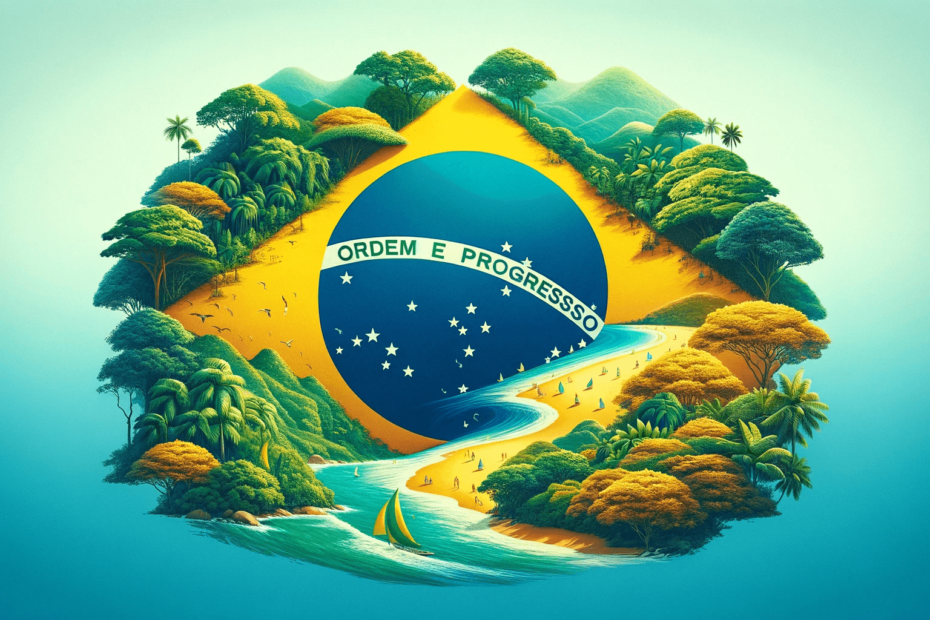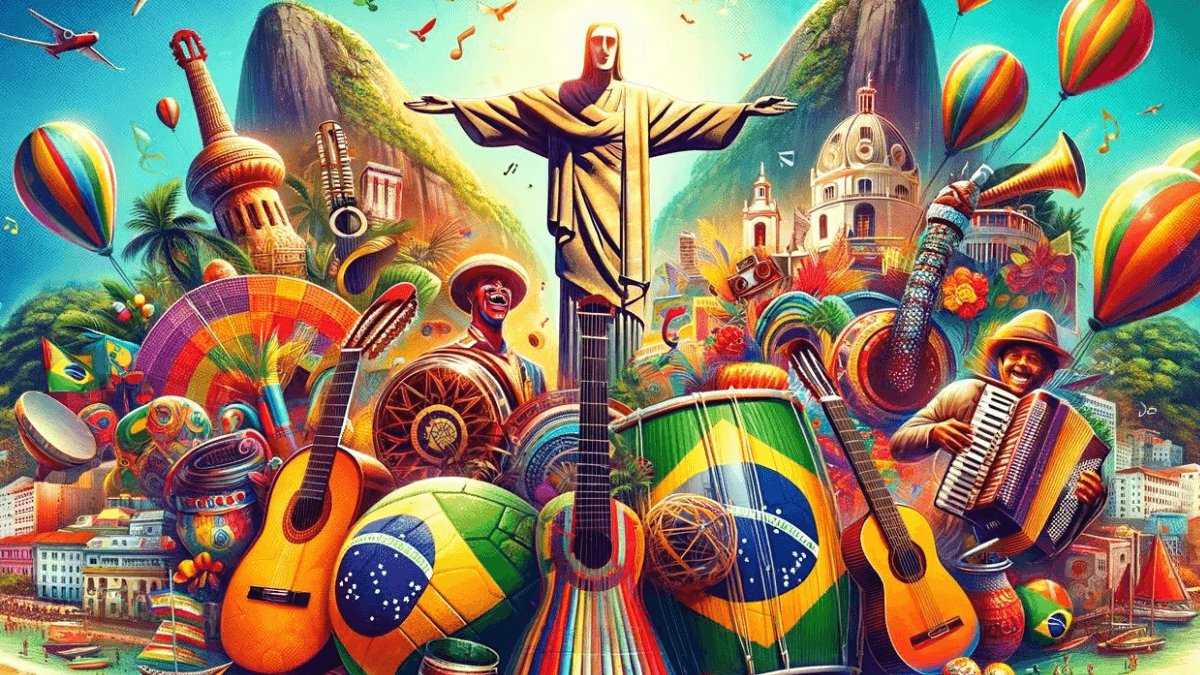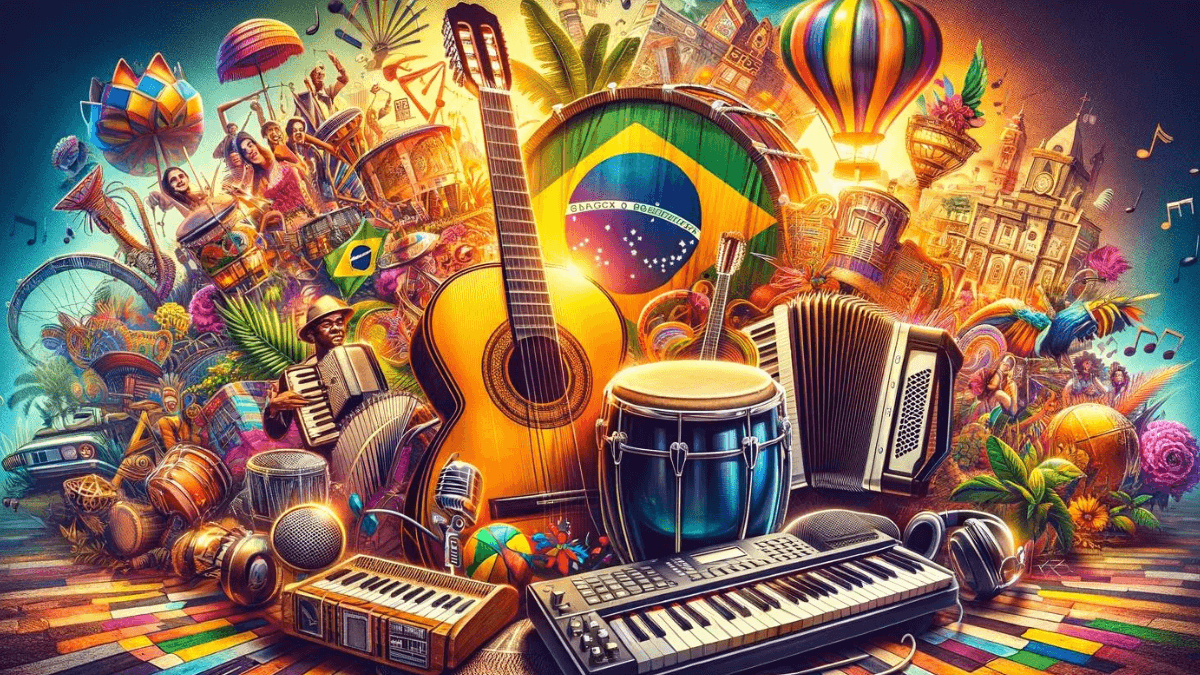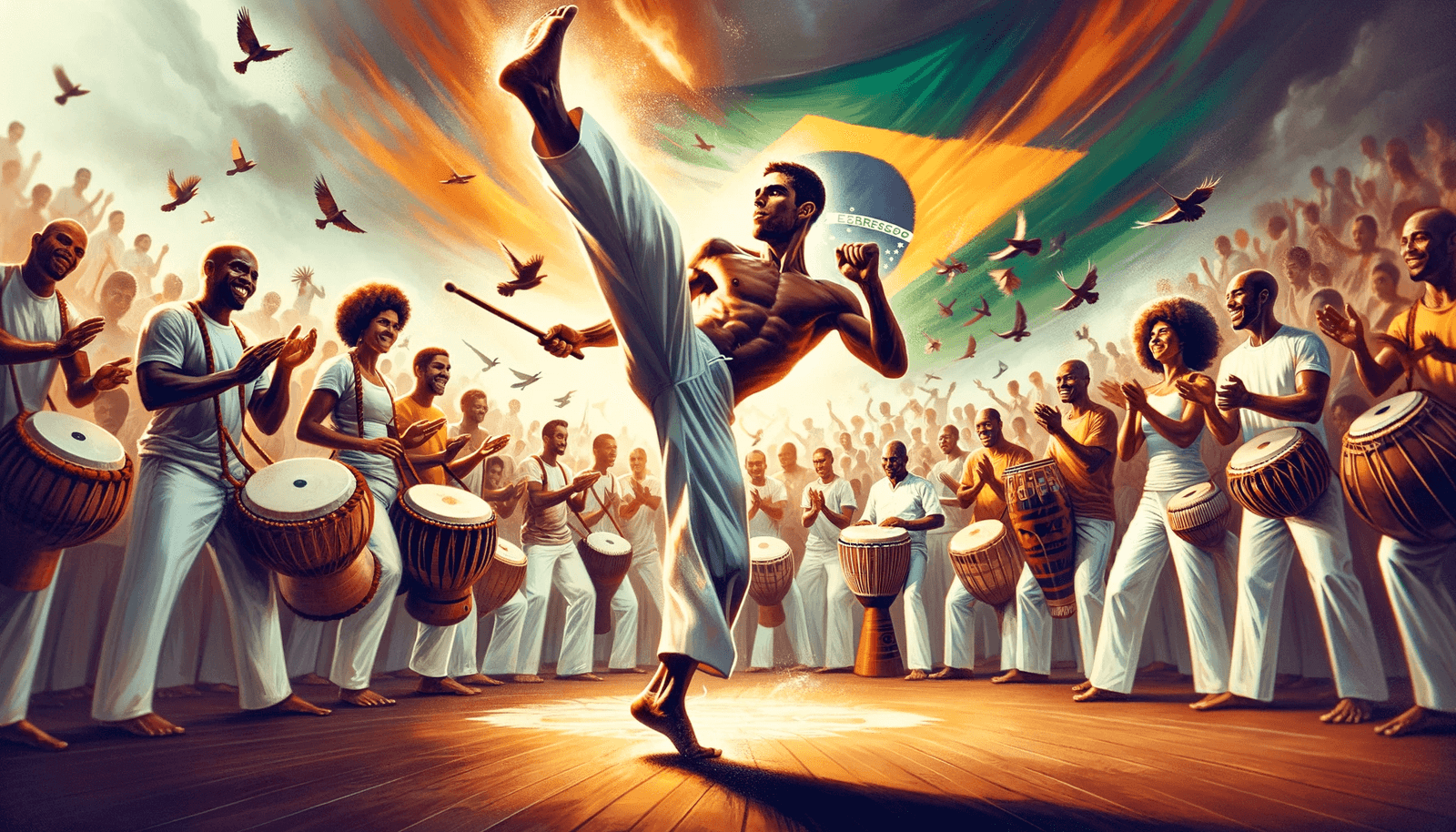Oi, folks! Welcome to a splash of color, history, and symbolism, all wrapped up in the vibrant canvas of the flag of Brazil.
make a nice represetation of the brazilian flag in 1200px X 675px. make an image where the green of the flag represents the forests of brazil, the yellow the sand of the beaches and the blue the sea
As a Brazilian eager to share the heartbeat of our culture, let me guide you through the story and significance of our national symbol.
This isn’t just about a flag; it’s about the soul of Brazil, expressed through a mix of colors, shapes, and stars that tell tales of our past, our dreams, and our identity.
From its historical roots sprouting in the days of empire to the democratic skies it symbolizes today, our flag is a journey through time, embodying the spirit of “Ordem e Progresso” (Order and Progress).
So, grab a cup of coffee or a caipirinha, sit back, and let’s unravel the mysteries of the Brazilian flag together, exploring its evolution, the deep meanings behind its colors, and the cosmic dance of its stars.
Ready to dive into the green, yellow, blue, and white? Vamos lá (Let’s go)!
What Does the Brazilian Flag Look Like?
The Brazilian flag flaunts a vibrant green field, a yellow rhombus, and a blue globe dotted with stars:
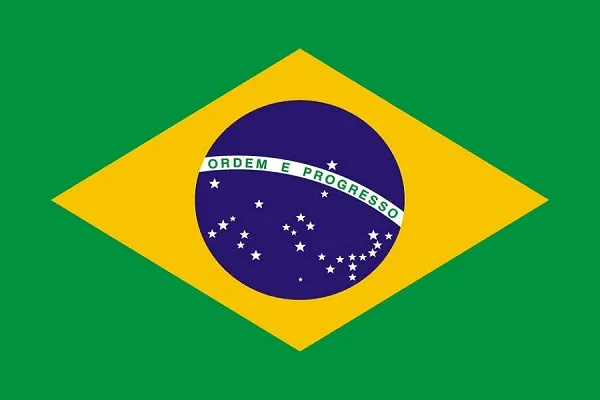
Plan your trip to Brazil
- Find the cheapest flights
- Discover the best accommodation
- Explore this incredible country with the best experiences
- Stay connected at all times with an eSIM
History of the Flag of Brazil
Our flag’s story is as dynamic as Brazil itself, evolving through time to reflect the nation’s identity and changes.
The current design was adopted on November 19, 1889, just four days after Brazil transitioned from a monarchy to a republic.
But before this emblem graced our skies, Brazil had an other flag that marked different epochs in its history.
Initially, under Portuguese rule, Brazil didn’t have a flag of its own.
It was only in 1822, when Brazil declared independence, that the need for a national symbol emerged.
Also See | Is a Visa Required to Travel to Brazil? Everything You Need to Know About Entry into Brazil
The first flag of independent Brazil featured the green and yellow colors, representing the House of Braganza of Emperor Pedro I and the House of Habsburg of his wife, Leopoldina. This design laid the groundwork for the color scheme we cherish today.
However, the transition from a monarchy to a republic necessitated a new symbol, leading to the birth of our current flag.
The design was conceived by Raimundo Teixeira Mendes, with the collaboration of Miguel Lemos, Manuel Pereira Reis, and Décio Villares.
The symbol of the empire was removed, giving way to the blue globe with white stars was introduced, representing the sky over Rio de Janeiro and each star corresponding to a Brazilian state.
This flag of Brazil was meant to signify the new republican ideals, embedding “Order and Progress” within its design, a motto inspired by the positivist philosophy.
Over the years, the star arrangement has been updated to reflect changes in the number of states, but the essence and symbolism of the flag have remained steadfast, a testament to Brazil’s enduring spirit and unity.
Design Evolution
If we count from its independence, Brazil has only had two flags.
The first represents the Empire, which lasted from 1822 until 1889, with elements of the lineage of the emperor and his wife
On the imperial flag, the green in the rectangle represented the coat of arms of the Bragança family, to which the first emperor of Brazil, Dom Pedro I, belonged.
The yellow lozenge represented the Habsburg dynasty – which ruled Austria – the homeland of Dom Pedro I’s wife, Empress Maria Leopoldina.
In the center of the flag was a coat of arms: the badge consisted of a green shield, with the armillary sphere and the Cross of the Order of Christ (in red) in the center.
A rim with a blue background and 19 white stars represented the Brazilian provinces. Above the shield was the imperial crown.
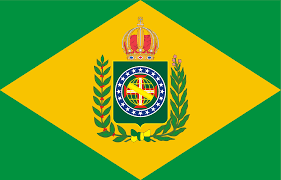
With the fall of the empire and the proclamation of the republic of brazil in 1889 came the flag still in use today, which replaced the monarchist coat of arms with a blue sphere bearing the phrase.
Also See | Brazil Money: From its Exchange Rate To Its History
Meaning of the Colors of the Brazilian Flag
Find out what each of the colors on the flag of Brazil means:
- Green represents the House of Braganza of Emperor Pedro I, reflecting the royal family’s lineage.
- Yellow symbolizes the House of Habsburg of Empress Leopoldina.
- Blue, with the celestial globe, showcases the night sky over Rio de Janeiro at the proclamation of the Republic on November 15, 1889. Each star represents a state in the federation.
- The white in the flag, found in the band that carries the national motto “Ordem e Progresso” (Order and Progress), stands for peace and unity among the Brazilian people.
Elements of the Brazilian Flag
In addition to the colors, learn about the meaning of the elements present in the Brazilian flag:
Stars
The stars on the flag of Brazil are designed to reflect the night sky as seen from Rio de Janeiro on November 15, 1889, and each one corresponds to a state in the country.
The star positioned above the white band that carries the national motto “Ordem e Progresso” on the Brazilian flag indeed represents the state of Pará, the only Brazilian state (at the time of the flag’s adoption in 1889) that lies entirely north of the equator.
This specific star’s placement above the motto is a distinctive feature meant to denote Pará’s unique geographical position in relation to the rest of the country.
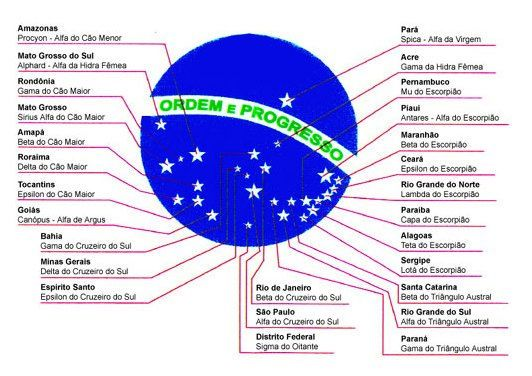
Also See | The Majestic Iguazu Falls in Brazil: A Comprehensive Guide
Symbols
Yellow Lozenge: like the color yellow, also symbolizes the house of Habsburg, the Austrian family into which Dona Leopoldina was born.
Blue Circle: the sky.
Phrase
“Ordem e Progresso” (Order and Progress) – this motto, draped across the blue globe in a white band, is more than just words; it’s a guiding principle for the nation.
Inspired by Auguste Comte’s positivism, it reflects the belief in the importance of order as the foundation for progress.
This phrase encapsulates the Brazilian spirit of striving for a harmonious society where advancement is achieved through unity and structured development.
Embracing the “Verde e Amarelo”
As we wrap up our journey through the vibrant world of the flag of Brazil, it’s clear that it’s more than just a symbol; it’s a narrative of our nation’s history, values, and aspirations.
From the imperial days to the republican era, each color, star, and symbol tells a story of unity, progress, and immense pride.
So, whenever you see our flag flying high, remember the rich tapestry of Brazil it represents, weaving together the past, present, and future into a single, beautiful emblem of our shared identity. Viva o Brasil!
Did you like our content, do you want to get to know our country?! Discover the best experiences to live in Brazil!
